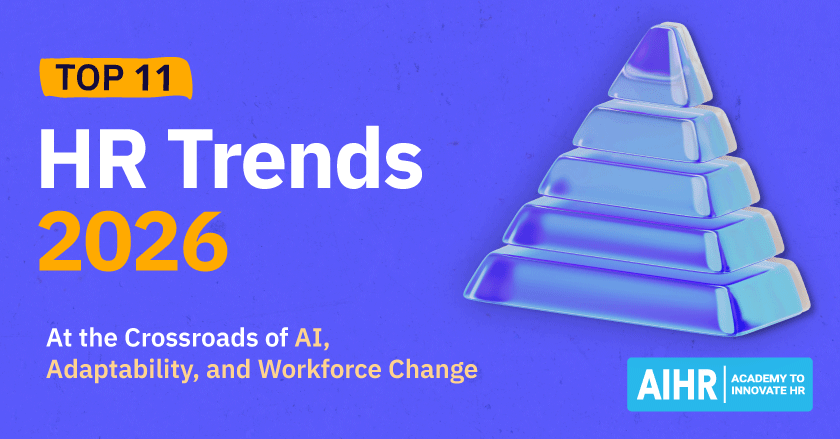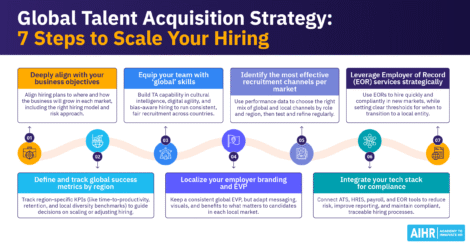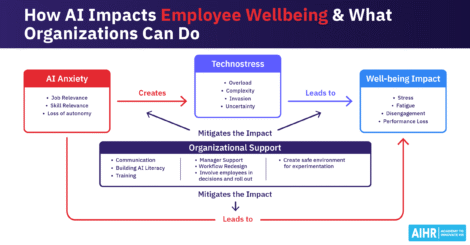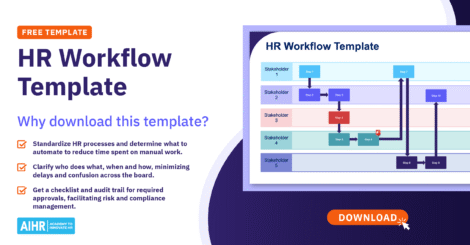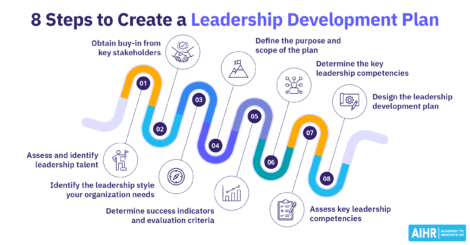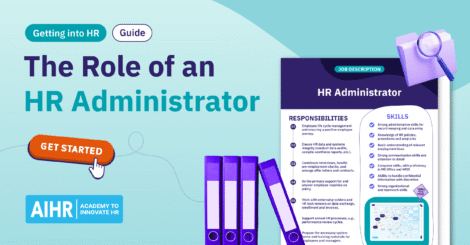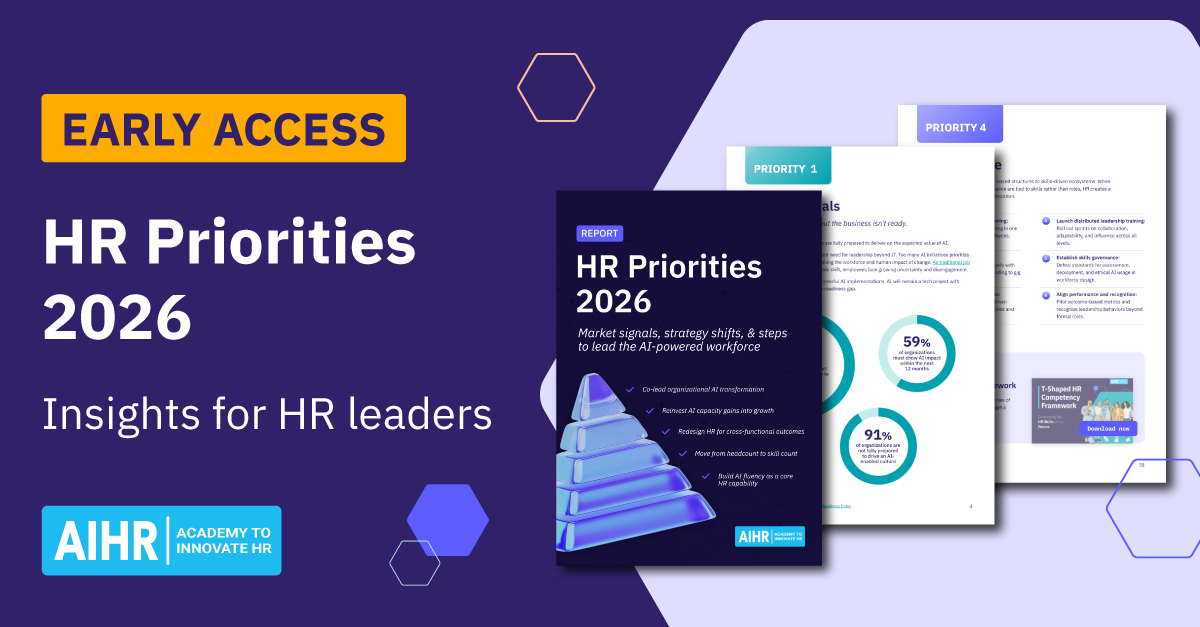HR as a strategic partner is not just a trendy business catchphrase; it’s an essential role for companies that want to remain competitive. In light of AI transformation in HR, digital skills shortages, changing employee expectations, and other market shifts, HR must step out of an administrative role into a strategic one that drives business impact.
How can you achieve this as an HR leader? This article explores the practical steps needed to make HR a strategic partner, relevant examples to guide you, and solutions to help you make strategic HR a key part of your organization.
Contents
What is strategic HR?
What “HR as a strategic business partner” means in practice
Why strategic HR matters now
Why HR should be a strategic partner
7 key challenges and practical solutions
HR as a strategic partner: A 13-step roadmap
How to optimize strategic HR planning
Key takeaways
- Strategic HR aligns people strategy with business goals to drive measurable outcomes.
- HR professionals must become strategic business partners and participate in planning, not just implementation.
- Key business impacts include revenue considerations, cost control, risk mitigation, and greater agility.
- Identifying and overcoming common obstacles like data silos and skill gaps is crucial for strategic HR success.
What is strategic HR?
Strategic HR is the practice of aligning people, structures, and culture with long-term business goals. It means designing and delivering HR programs that drive growth, improve margins, reduce risk, and support flexibility. At the same time, it’s more forward-looking and business-focused than traditional HR, which is typically more reactive and operational.
In other words, HR becomes a partner in shaping company strategy, and not just an administrative function that goes through the motions. Strategic HR teams understand how the business makes money, anticipate future workforce needs, adopt a data-driven HR mindset, and help leaders execute strategy through their people.
Strategic HR also works in multi-quarter planning cycles, deeply integrated with the company’s annual and quarterly business planning. It extends beyond talent acquisition, encompassing everything from organizational design to culture and risk management. For a deep dive into strategic HR, check out our guide to strategic human resource management.
What “HR as a strategic business partner” means in practice
“HR as a strategic business partner” means that HR is actively involved in decision-making and proactively shapes and drives business plans. Here’s what that looks like:
1. Participate in setting strategy
Strategic HR teams collaborate with business leaders during annual and quarterly planning cycles, providing insights on talent supply and demand, workforce and succession planning, and the required skills to help meet business goals and objectives. HR strategic partners shape trade-offs, surface risks, and offer workforce options to help the business succeed.
2. Proficiency in business levers
HRBPs must understand how the company generates and allocates funds, as well as how work is accomplished. This includes revenue drivers, cost components, productivity metrics, current compliance risks, and risks in new markets. Think of HRBPs as consultants who guide talent decisions with data. This builds credibility with leadership and links people investments to financial returns.
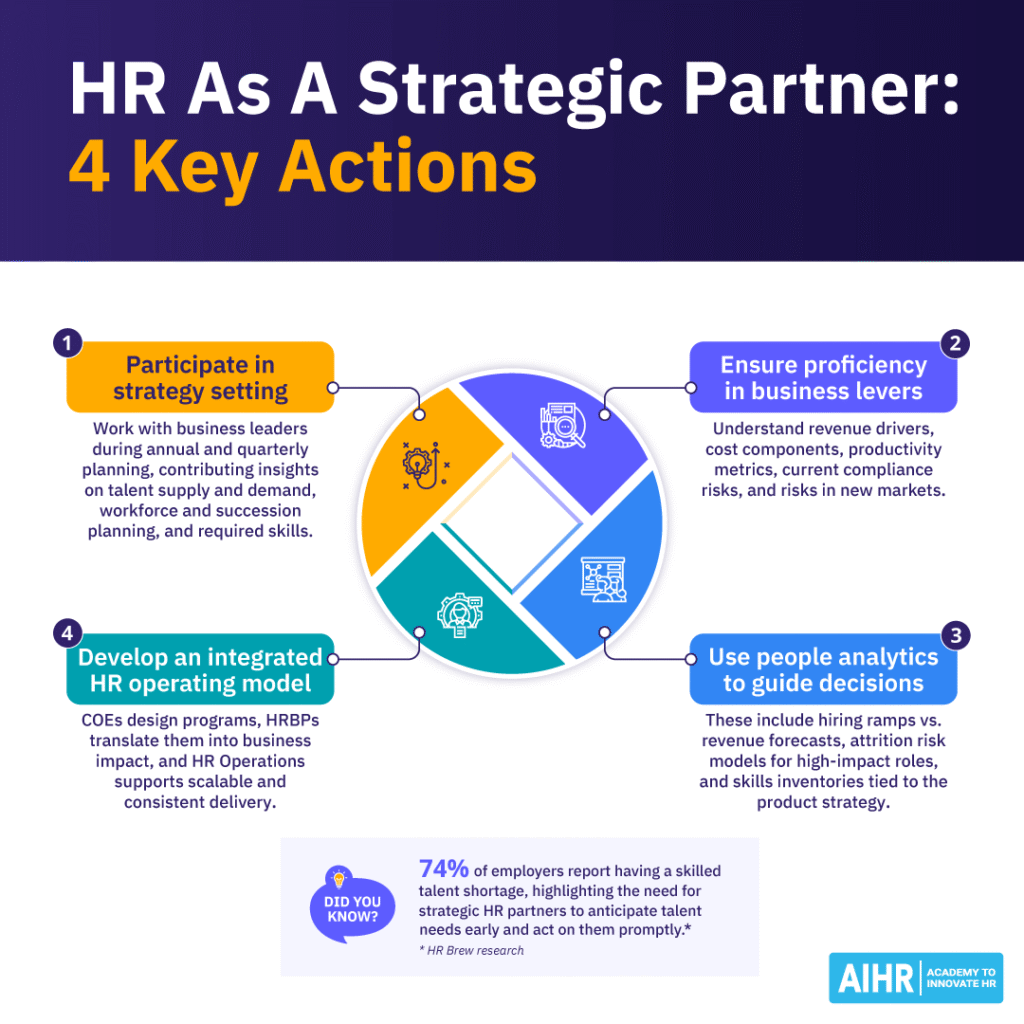
3. Using people analytics to guide decisions
These include hiring ramps vs. revenue forecasts, attrition risk models for high-impact roles, and skills inventories tied to the product strategy. Data helps HR earn credibility, make sound recommendations, and drive alignment. Modern teams share live dashboards with company leaders — not just internal spreadsheets — so decisions are faster and better coordinated.
4. Developing an integrated HR operating model
Strategic HR works when the function operates as one connected system. Centers of Excellence (CoEs) design programs, HRBPs translate them into business impact, and HR Operations supports scalable, consistent delivery. This allows HR to move quickly, stay focused, and prove its business value. It also ensures every HR area works from the same playbook.
Why strategic HR matters now
There are several “macro trends” accelerating the need for strategic HR, including:
- AI and automation in HR: New technologies are rapidly reshaping roles, workflows, and skill requirements; businesses must adapt or risk falling behind.
- Talent scarcity: The most skilled and suitable talent is often difficult to find and retain, so strong organizations must anticipate talent needs and act early.
- Regulatory complexity: Labor laws, data privacy, and DEIB requirements are increasing in scope and scrutiny.
- Distributed work: New work models require new ways to design teams, manage performance, and build culture.
In addition to the above trends, organizations must also account for rising employee expectations, economic challenges, and the fast pace of digital transformation. It’s clear that the old HR playbook is no longer enough and strategic HR is no longer optional, but fundamental to a company’s resilience and growth.
Becoming a strategic HR partner is a key way to remain relevant and contribute to business success. To achieve this, you must utilize shared metrics and leading indicators, prioritize critical roles and skills, and communicate the impact in clear financial terms.
With AIHR for Business, your team will learn to:
✅ Empower every HR function to deliver strategic business value
✅ Bridge knowledge gaps, adopt industry best practices, and drive productivity
✅ Identify trends, address challenges, and deliver impactful solutions
🎯 Elevate your HR function from administrative to strategic.
Why HR should be a strategic partner
So why should HR be a strategic partner? To answer that question, let’s translate HR impact into terms that resonate with your executive team:
Revenue growth
Faster hiring of sales and engineering roles accelerates financials and profits. Skills alignment supports new product development and market entry, while effective enablement increases sales productivity and quota attainment. Strategic workforce planning means you’re not scrambling to hire once a product launches, because you’ve already built a solid talent pipeline.
Cost control
Smart workforce planning reduces overtime, severance, and contingent workforce costs, while reduced turnover in high-impact roles lowers backfill costs and promotes stability. Additionally, strong OD reduces layers, increases scope, and cuts redundancy. When HR owns headcount modeling alongside finance, costly surprises decrease and efficiency increases.
Risk reduction
This entails anticipating and mitigating compliance risks (labor laws, DEIB mandates), and incorporating data privacy, safety programs, and employee relations into planning and operational readiness instead of leaving them to chance. HR’s involvement in planning means your company doesn’t stumble into risk but plans around it.
Innovation and agility
Workforce skills mapping supports flexibility and adaptability, while internal mobility programs optimize resource use on critical projects, and cross-functional teams increase market entry. This agility becomes especially useful during mergers and acquisitions, business slowdowns, or major shifts in customer demand, helping the business stay afloat without disrupting operations.
Culture and performance
A strong company culture is a business enabler, especially during periods of growth or transformation. It enables clear goals, effective managers, and feedback systems that drive implementation. Also, a healthy organizational culture allows the business to outperform its competitors in areas like employee retention rate, engagement, and even overall earnings.
7 key challenges and practical solutions
Even high-performing HR teams encounter obstacles when transitioning to a strategic role. Here are the most common challenges you’ll face, and how to address them:
Limited credibility with business leaders
Train HRBPs in business finance and require data-backed proposals that include ROI and risk analysis.
Fragmented data and systems
Build a centralized dashboard with shared definitions both Finance and HR can use.
Reactive solutions
Tie talent planning to business OKRs and use leading indicators like offer acceptance rates.
Misaligned incentives
Align executive and manager bonuses to talent outcomes, such as retention and internal moves.
Change resistance
Run HR initiatives as change programs with clear sponsors, milestones, and feedback loops.
Capability gaps
Upskill HR in analytics, organizational design, and workforce planning, and hire or develop strategic HRBPs.
Short-term pressure
Pair quick wins (e.g., reducing external recruiting costs) with longer-term moves, such as company-wide skills assessments.
Overcoming these challenges often requires a mindset shift from “what HR owns” to “what business outcomes HR influences”.
HR as a strategic partner: A 13-step roadmap
Here’s a structured, 13-step roadmap to HR becoming a strategic partner:
Step 1: Learn the business model
Over the next 12 to 24 months, build a clear picture of how the company makes money, where it spends it, and which products, customers, and markets matter most.
Next, schedule meetings with finance, sales, product, and operations to understand revenue drivers, cost structure, and unit economics. After this, translate this knowledge into HR implications so every HR plan ties back to the P&L.
Step 2: Build a joint planning system
Integrate HR’s planning with business and finance on the same annual and quarterly cadence and a monthly operating rhythm for fast adjustments. Additionally, be sure to use one shared calendar, one set of planning templates, and one source of truth for assumptions.
At the same time, align checkpoints so hiring plans, budgets, and capacity models are updated together when targets, product timelines, or market conditions change.
Step 3: Define HR strategic goals
Set three to five measurable goals that directly support business outcomes, with clear owners and deadlines. Examples include “reduce sales ramp time by 20% to support Q1 ARR targets” or “lift engineering retention to 92% in critical roles by year-end.”
Tie each goal to a baseline, a forecasted impact on revenue or cost, and a small set of leading indicators. This allows leaders and other key stakeholders to view and assess progress clearly every month.
Step 4: Prioritize critical roles
Identify the roles that have the greatest impact on revenue, innovation, customer experience, or compliance risk, then direct hiring, development, and retention resources towards those roles first.
At the same time, build a heat map showing supply, demand, time to fill, performance variability, and backup coverage for each critical role. Use this to guide trade-offs when budgets are tight or timelines shift.
Step 5: Create a skills blueprint
Map current capabilities against future needs according to function and role level, then break down each role into must-have skills, adjacent skills, and emerging skills tied to the product and market roadmap.
Use this blueprint to decide whether to buy (hire), build (train), borrow (contract), or bot (automate), and to design targeted learning paths and career moves that close gaps on the fastest route.
Step 6: Design the organization
Align structure, spans, and layers, as well as decision rights and interfaces, so the organization can keep pace with the business’s speed. Keep teams small where speed matters, minimize handoffs, and clearly define who should make decisions to avoid bottlenecks.
Additionally, document operating principles — meeting cadence, escalation paths, and cross-functional rituals — to ensure consistent and accountable execution.
Step 7: Plan the workforce
Create 12- to 18-month hiring and capacity plans within the context of multiple scenarios (base, upside, downside) with trigger points that add or pause hiring. Be sure to include a mix of FTEs, contractors, nearshore/offshore options, and automation.
Then, pair volume plans with pipeline health metrics — time to slate, offer acceptance, and time to start — so you can adjust early before targets have a chance to slip.
Step 8: Strengthen leadership and managers
Give leaders simple and practical tools for coaching, feedback, and performance conversations, and measure manager effectiveness on a quarterly basis. Focus on the few key behaviors that drive outcomes, such as goal clarity, weekly check-ins, timely recognition, and rapid support for blockers.
You should also link manager development to team results, such as employee engagement, retention in critical roles, and time to productivity.
Step 9: Align rewards with outcomes
Assess the organization’s current compensation, incentive, and employee recognition programs, then make any necessary changes to ensure they help reinforce the behaviors and results the business needs now.
Calibrate pay ranges to market, ensure internal equity, and design variable pay to reward impact in critical roles. Add non-monetary levers (e.g., growth opportunities, visible projects, and flexible work), so your company’s total rewards package attracts and retains the right talent.
Step 10: Standardize people analytics
Define a small, stable set of KPIs (e.g., quality of hire, time to productivity, critical role retention, internal mobility rate, and manager effectiveness) and review them according to a fixed monthly or quarterly rhythm.
Next, use consistent definitions and a single dashboard shared with executives. Highlight trends, root causes, and recommended actions, not just data, so leaders can make decisions and act quickly.
Step 11: Support internal mobility
Remove policy and process barriers that slow down internal role transfers. At the same time, publish open roles internally, standardize eligibility rules, and set service-level targets for internal moves into critical roles.
You must also equip managers to plan successor pipelines and consistently reward them for developing and exporting talent. Don’t forget to track mobility velocity and the business impact of faster redeployments.
Step 12: Run change like a project
Treat each major Human Resource initiative as a formal change program with a named executive sponsor, clear scope, success metrics, risk assessment, and a communication plan.
Use a simple roadmap with milestones, owners, and dates, and communicate updates in status in the same format used by product or operations. Collect feedback at each stage and adjust quickly to keep adoption high.
Step 13: Communicate impact
Translate HR work into business language and outcomes leaders understand easily and care about. These include revenue, profit margin, risk, speed, and customer impact.
For every initiative, show the baseline, intervention, measurable results, and financial or operational effects. Share quick, visual updates in executive forums, and close the loop by highlighting lessons learned and next steps to take.
How to optimize strategic HR planning
Once you’ve begun the process, here’s how to maintain momentum:
- Use shared metrics: Agree on a small set of definitions and KPIs used by HR, Finance, and the business (e.g., headcount or time to productivity). Put them on one dashboard, so everyone sees the same data, reducing debate and speeding up decisions.
- Track leading indicators: Monitor early signals that predict outcomes (e.g., pipeline health, offer acceptance rate, onboarding milestone completion). These will give you time to correct course before targets can slip.
- Tap into scenario planning: Plan for base, upside, and downside cases. Tie each scenario to clear triggers (e.g., product launch dates) and pre-approved actions like hiring pauses or internal moves. This keeps HR responsive without scrambling to act.
- Hold quarterly reviews: Run a simple, recurring business review with HR, Finance, and line leaders to compare your plan with reality, discuss risks, and align on next steps. Use the same deck format each time to make trends obvious and follow-ups easy.
- Adopt a product mindset: Treat HR programs like products with defined customers, problem statements, roadmaps, and success metrics. Roll them out in small increments, gather user feedback, and iterate. This improves adoption and business impact.
- Keep policies concise and easy to understand: Write policies in plain language, keep them concise, include relevant examples, and write a one-page summary. Simple policies reduce confusion and, in turn, support tickets.
- Invest in manager capability: Give managers practical tools for goal-setting, feedback, and coaching, and measure their effectiveness. Tie manager development to team outcomes like engagement, retention in critical roles, and performance quality.
- Connect learning to work: Link training to real tasks and projects. Use on-the-job assignments, peer coaching, and just-in-time resources that support current priorities. Then, track whether new skills feature in deliverables, not just course completions.
- Measure time to value: For each HR initiative, define the first moment it delivers measurable benefit (e.g., reduced ramp time) and track how long it takes to get there. Shortening time to value builds credibility and frees capacity for the next priority.
- Tell stories with data: Pair charts with a clear narrative — the baseline, what changed, the result, and the business impact on revenue, cost, risk, or speed. Keep visuals simple and end with a specific ask, like approving a plan or removing a blocker.
Final thoughts
HR as a strategic partner isn’t just about getting a seat at the table — it’s about owning a voice in the future of the business. HR leaders can move from Human Resources from a support function to a core business driver by aligning talent strategies with revenue goals, cost pressures, and innovation demands.
While the shift won’t happen overnight, the steps are clear: learn the business, use data, prioritize high-impact roles, plan ahead, and use language your exec team understands. The future of business success lies in the people strategy, and no one is better positioned to lead that than HR.


